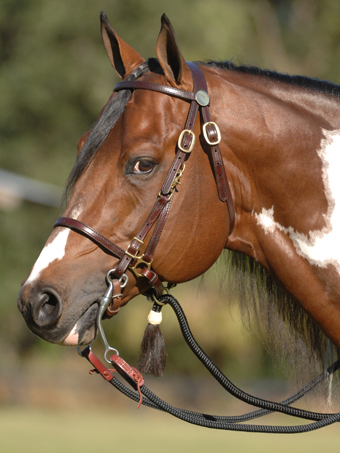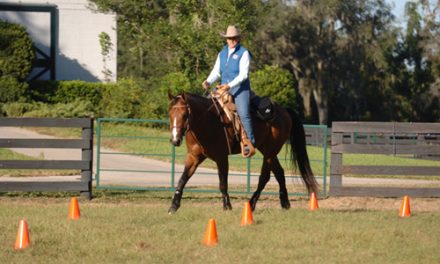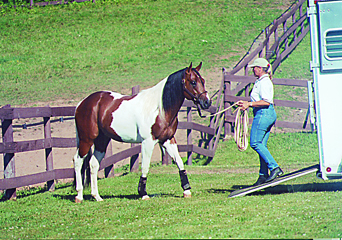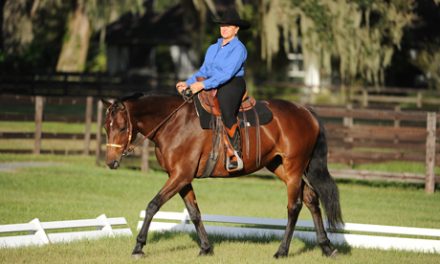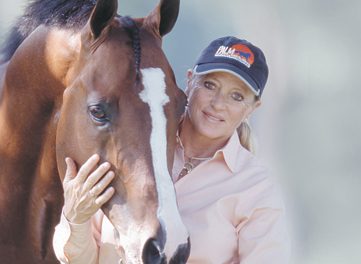Palm Partnership Training™
 Health care, hoof maintenance, and nutrition are so important because, let’s face it, if your horse does not feel good due to an illness or poor nutrition, or if his feet hurt, or his mouth is sore, then he is not going to perform to his best ability.
Health care, hoof maintenance, and nutrition are so important because, let’s face it, if your horse does not feel good due to an illness or poor nutrition, or if his feet hurt, or his mouth is sore, then he is not going to perform to his best ability.
Your Equine Dentist
Communication is again the key with working with an equine dentist just as it was with working with a veterinarian. You probably will not, however, have as large a pool of professionals to choose from as you did with veterinarians. Therefore, you may not have the luxury of selecting an equine dentist who is a perfect fit with you in terms of personality. Just like with a vet, however, an equine dentist should display a willingness to explain all problems and procedures to you and have time for your questions.
To find a good equine dentist, you should first start with a recommendation from your vet and from other area horsemen. Try to obtain references, and call them! Ask the references questions like: “Has he/she corrected problems for you to your satisfaction?” “Have you had to call him/her back after a routine, yearly floating?” “Does the dentist understand the type of bit you use and its action in the mouth?” “Does he/she explain things to you clearly and concisely?”
One of the most important issues with an equine dentist is that of restraint. A dentist that does not have to twitch a horse is a good horseman, and that is a must! If your dentist gets strong with a horse that resists, get another dentist. A dentist should not have to tranquilize a horse unless the horse is extremely sensitive or has bad wolf teeth. If you have done your part and trained your horse to stand quietly under most situations, it will make it a lot easier on your
horse and the dentist (Click here to learn about our Longevity Training series).
You should have your horse’s teeth checked and floated once per year. If your horse has any type of abnormal mouth, then it should be done twice per year. Wolf teeth should be extracted before the age of two. Older horses may need special care in order to make sure they are getting optimum nutrition from their feed. Signs of dental problems may include: leaving grain in their bucket, dropping grain, trouble with eating hay, excessive mouth action on bit, and reluctance to take the bit.
Your Farrier
“No foot, no horse,” is the old saying, and how true it is. Your horse’s hooves are his foundation. Therefore, your farrier or blacksmith is a key professional in the goal of keeping your horse sound.
As with your veterinarian, you must develop an effective working relationship with a farrier to get the most out of his skill and experience. This means that you must find a farrier who takes time for you and your horse. He/she should be able to give you an analysis of your horse’s hoof care needs, in terms that you can understand, and state his recommendations and provide a plan for achieving them. He should be open minded in seeking a second opinion on hoof care issues, including that of your veterinarian, and he should be willing to offer a referral to another farrier if specialized treatment is needed that he is not capable of handling.
To find a farrier who meets these qualifications, ask knowledgeable horsemen within your area for their recommendations. If possible, select a farrier who specializes in your riding discipline. If you are a hunter/jumper, look for a farrier who has experience in shoeing horses that compete in that discipline, rather than a blacksmith who specializes in trail horse shoeing.
If possible, watch the farrier at work on a client’s horse. Observe how he handles the horse. Again, if he gets strong with a horse that resists, then you probably want to look elsewhere. Note the time and care made in his evaluation of the hoof care needs. Ask the client if he/she is happy with the results of his workmanship.
If you like what you have observed, make an appointment to talk with the blacksmith. Ask him about his credential and the services he offers. Ask for more references from his clients. This is a good way to evaluate your ability to communicate together while you get important information about the farrier’s experience and skills.
Once you have chosen a farrier, he should develop a hoof care plan for your horse. In order to do so, the farrier should evaluate three key characteristics of your horse—his conformation, the angle of each hoof, and his balance. The farrier should trim or shoe to achieve a balanced hoof, not to correct conformation. Shoeing should not be done to straighten a horse’s leg or “correct” his hoof angles.
Each hoof should be trimmed and/or shod so it lands balanced—it should not be higher or lower on either side of the hoof. Trimming and shoeing should be done according to the hoof’s natural angle in relationship to the pastern and coffin bones. To be certain of achieving the correct angle, a farrier may work with your vet to obtain x-rays of the horse’s hooves to guide his work.
The farrier should tell you the angles of the front and hind hooves and toe lengths. Keep this information with your monthly records of each shoeing. He also should advise you on the health of the hooves each time that he works on your horse—are the hooves too dry, too soft, have a thrush problem, etc. The farrier always should recommend how to treat any hoof problems and the products you need to improve the condition of the hooves.
You can improve hoof care by maintaining a regular appointment schedule with your farrier every four to eight weeks depending on the condition of your horse’s hooves. Between appointments, make it part of your daily horse care routine to inspect and clean the hooves. This will help you detect problems such as loose shoes or hoof injuries before they get more serious.
Periodic observations of how your horse moves also will help you spot problems. Stand your horse square on a hard, flat surface, and note any changes in how balanced he stands on each hoof. If possible, have someone else walk and trot your horse away from you and then back toward you to evaluate his balance as he moves. He should be landing flat and balanced on each foot fall.
Add these observations to your horse’s health care log. This gives you an important record of any changes that occur. Your ability to evaluate and communicate hoof care issues with the farrier will help insure your horse’s soundness and maintain a healthy partnership.
A horse that has soundness and teeth issues is not going to be a good partner in your relationship. Therefore, it is imperative that you spend as much time and care in selecting professionals in these fields as you did in choosing a veterinarian. Remember to use your common sense in selecting professionals in any field along with the criteria already given.
Learn more about Palm Partnership Training™ resources by visiting www.lynnpalm.com or calling 800-503-2824

